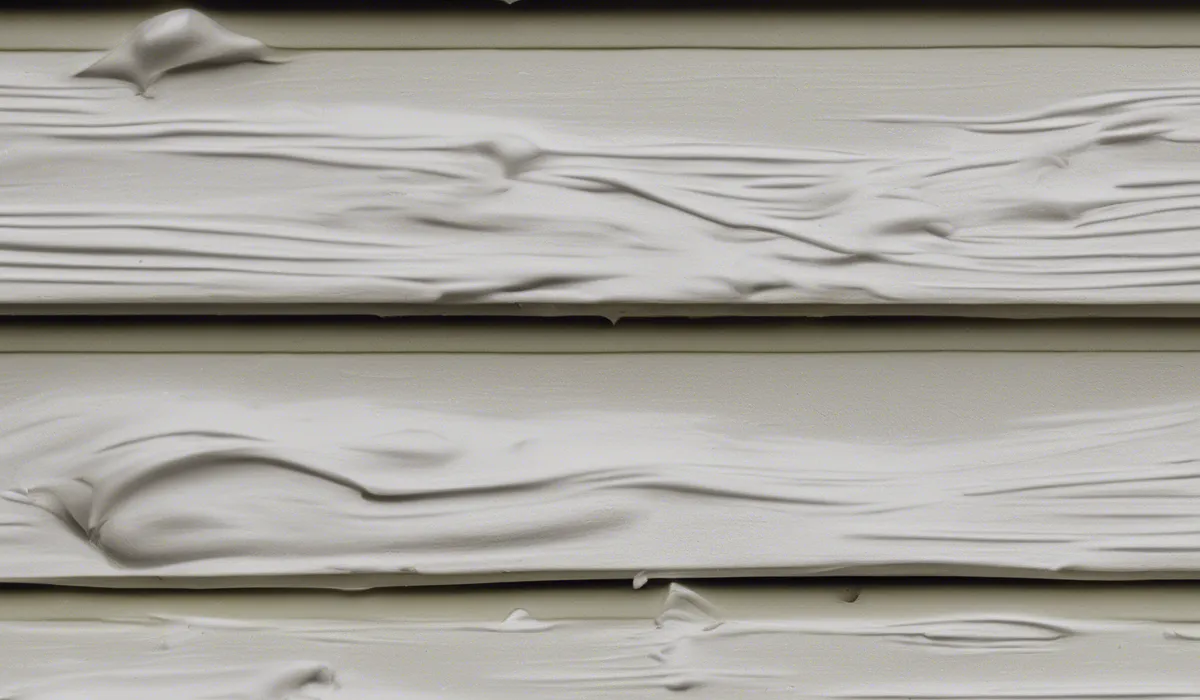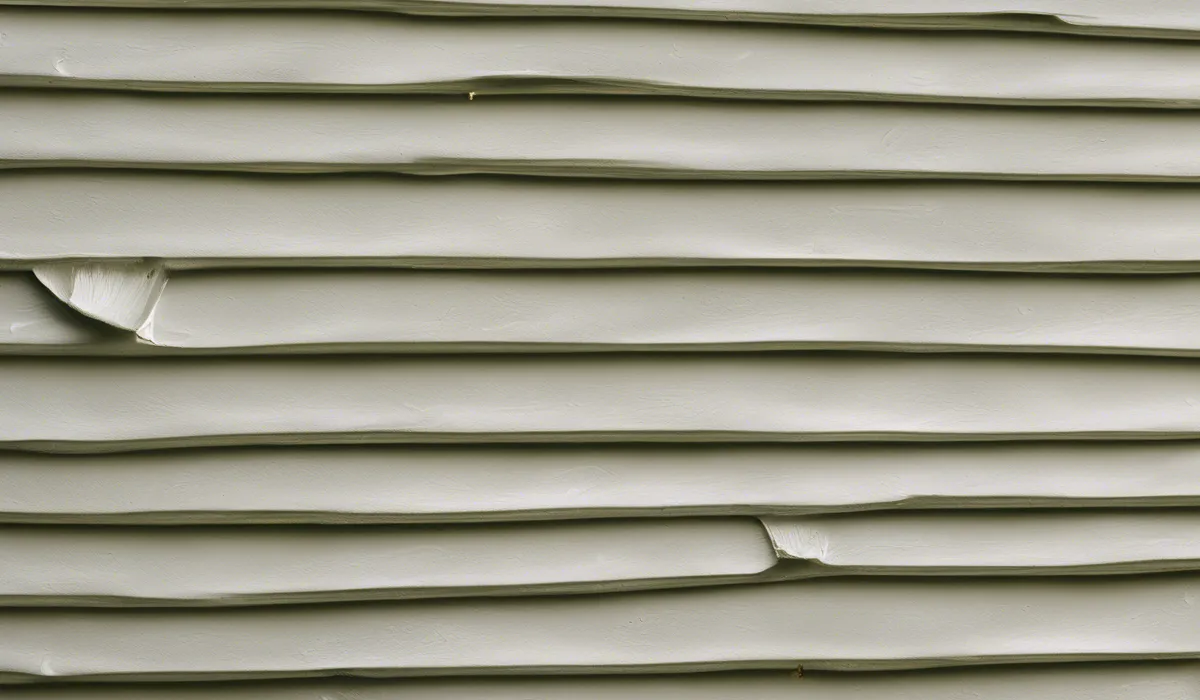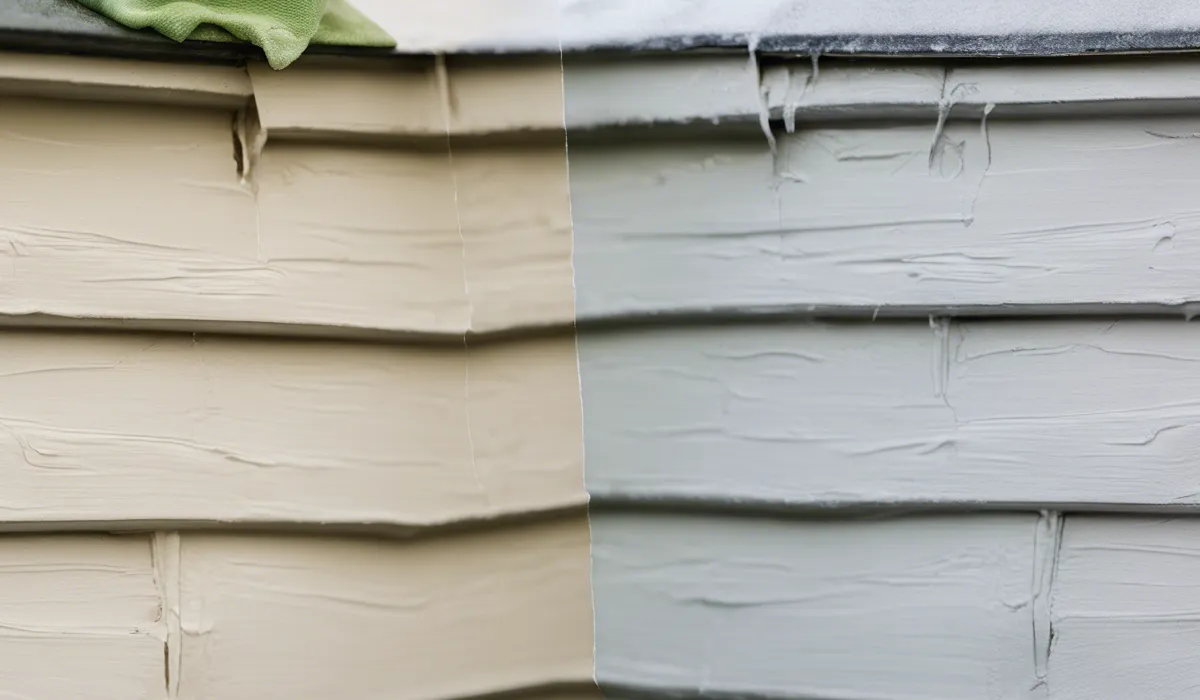To remove mildew from vinyl siding, mix a solution of 70% water and 30% white vinegar. Apply it with a soft-bristled brush, scrubbing gently. Rinse the area with a hose after cleaning. For stubborn mildew, add 1/3 cup of powdered laundry detergent to the mixture before application.
Mildew and Its Effects on Vinyl Siding

What Is Mildew?
Mildew is a type of fungus that thrives in moist environments. It’s often seen as a patch of gray or white that lies flat against a surface.
Mildew is particularly fond of organic materials but can also grow on inorganic surfaces, like vinyl siding, when the conditions are right.
Mildew vs. Mold
While often used interchangeably, mildew and mold are not the same. Mold is usually black or green and penetrates the surface of what it’s growing on, causing potential structural damage.
Mildew, on the other hand, stays on the surface and is less harmful but can still cause unsightly discoloration and a musty odor.
Growth of Mildew on Vinyl Siding
Vinyl siding is popular for its durability and ease of maintenance, but it’s not immune to mildew.
Mildew can grow on vinyl siding due to a combination of moisture, organic substances like pollen or dirt, and shade. These elements create a perfect breeding ground for mildew to flourish.
Damage to Vinyl Siding and Aesthetics
While mildew doesn’t cause the same level of damage as mold, it can still affect the integrity of vinyl siding over time.
If left unchecked, it can lead to permanent staining and degrade the aesthetic appeal of a home, potentially reducing its value and curb appeal.
Preparing to Remove Mildew from Vinyl Siding

Safety Precautions and Protective Gear
Before tackling mildew removal, it’s important to consider safety. Protective gear such as gloves, goggles, and a mask should be worn to avoid contact with cleaning solutions and mildew. Make sure to work in a well-ventilated area to avoid inhaling fumes or spores.
Cleaning Materials and Tools
Gather the necessary cleaning materials and tools for the job. You’ll need a gentle cleaner, like a mixture of water and white vinegar, a soft-bristled brush for scrubbing, and a garden hose for rinsing.
For tougher stains, a powdered laundry detergent can be added to the mixture.
Choosing the Right Weather for Cleaning
Select a day that’s overcast but not rainy for cleaning vinyl siding. Direct sunlight can cause the cleaning solution to evaporate too quickly, reducing its effectiveness in removing mildew.
Protecting Surrounding Areas
Before you begin, protect plants and landscaping around the house by covering them with plastic sheeting.
Ensure that windows are closed to prevent the cleaning solution from entering the home.
Step-by-Step Mildew Removal Process

Wetting the Siding
Start by wetting the vinyl siding with a hose to prevent the cleaning solution from drying too quickly. This prep step helps the cleaner to penetrate the mildew more effectively.
Choosing a Cleaning Solution
You can opt for a homemade cleaning solution or a commercial product designed for vinyl siding.
A homemade mix of 70% water and 30% white vinegar is often effective for mildew removal. However, for stubborn areas, commercial products might be necessary.
Applying the Cleaner
Apply the cleaning solution to the affected areas, starting from the bottom and working your way up to prevent streaks. For larger areas, consider using a garden sprayer to distribute the solution evenly.
Scrubbing the Mildew Away
Use a soft-bristled brush to gently scrub the mildew from the siding. Avoid using wire brushes or abrasive tools that could damage the vinyl.
For tough spots, let the solution sit for a few minutes before scrubbing.
Rinsing the Siding
After scrubbing, rinse the siding thoroughly with a hose to remove all traces of the cleaner and dislodged mildew. Ensure that the water flows down the siding in the same direction it was applied.
Preventing Future Mildew Growth
To prevent future mildew growth, keep the siding clean and free of organic debris. Trim back vegetation to reduce shade and moisture.
Consider using a mildew-resistant cleaner periodically to keep the siding looking fresh.
FAQs About Removing Mildew from Vinyl Siding
What is the recommended solution for removing mildew from vinyl siding?
To remove mildew from vinyl siding, it’s recommended to use a solution consisting of 70% water and 30% white vinegar.
What type of brush should I use to scrub the vinyl siding?
When cleaning vinyl siding, use a soft-bristled brush to avoid damaging the surface.
How should I rinse vinyl siding after cleaning?
After scrubbing the siding with the cleaning solution, rinse the area thoroughly with a hose.
What can I add to the vinegar solution for stubborn mildew on vinyl siding?
For stubborn mildew, you can add 1/3 cup of powdered laundry detergent to the vinegar and water mixture before applying it to the siding.
How do I apply the cleaning solution to the vinyl siding?
Apply the cleaning solution with a soft-bristled brush, scrubbing gently to remove the mildew.
Final Thoughts
To tackle mildew on vinyl siding, a diluted white vinegar solution proves effective. Gently scrub using a soft brush and rinse thoroughly.
For persistent mildew, enhance the solution with powdered laundry detergent. This simple, yet efficient approach ensures clean and mildew-free vinyl siding.
